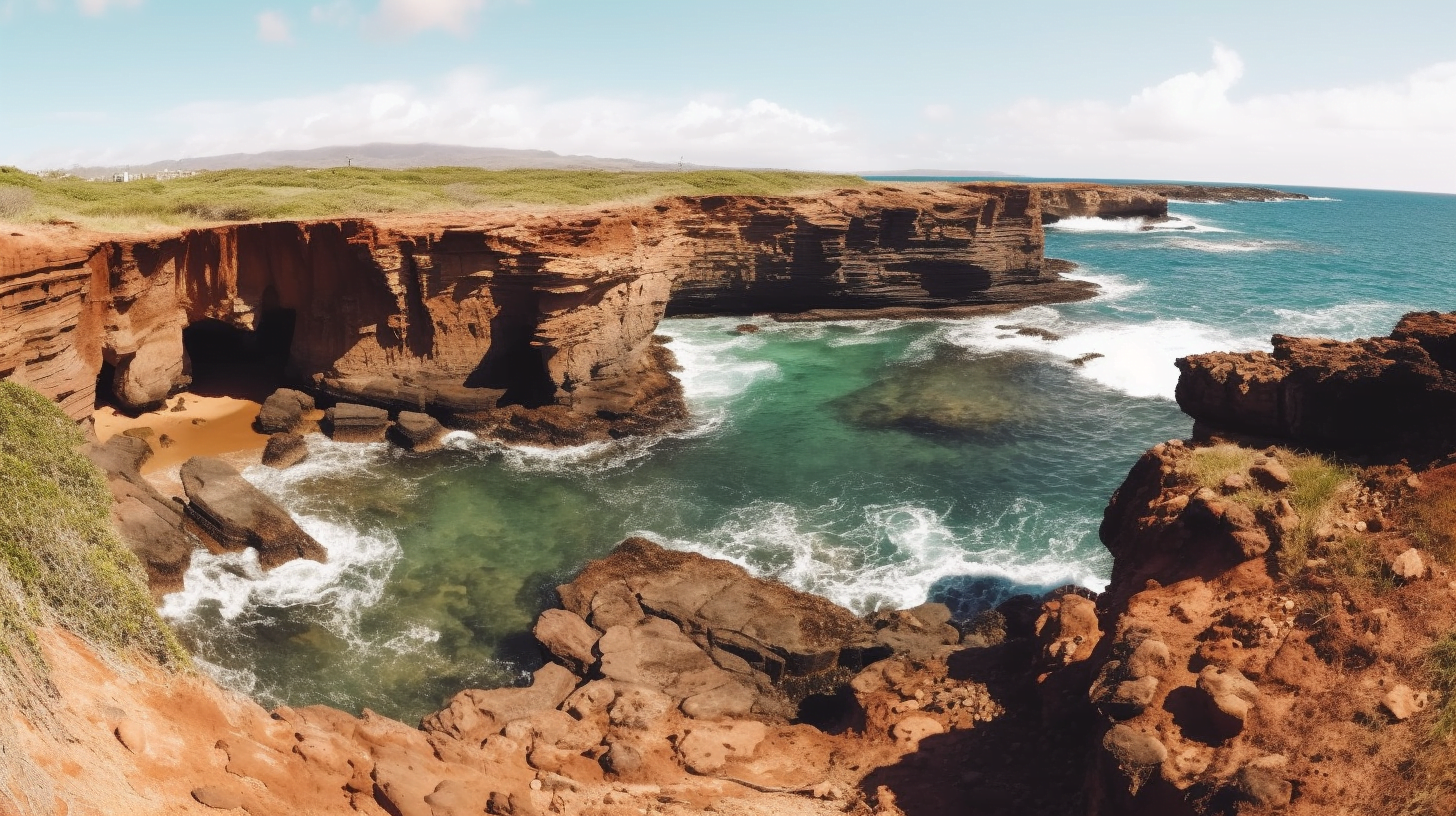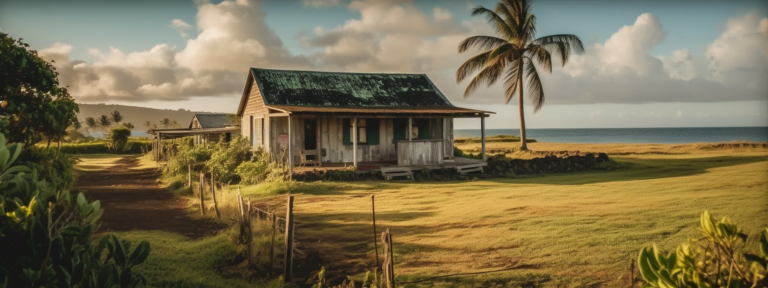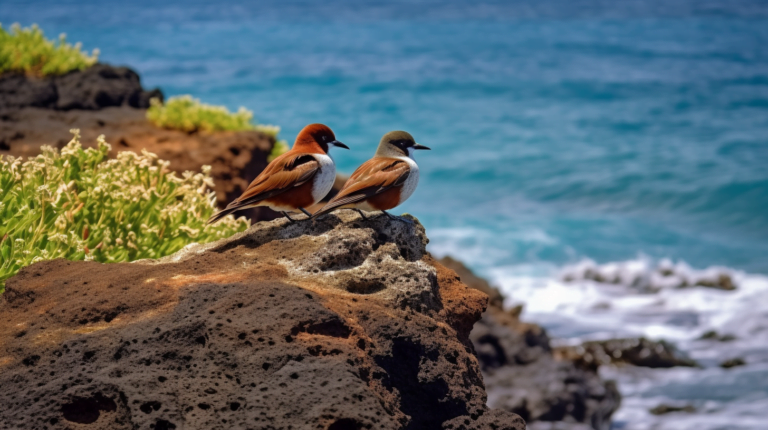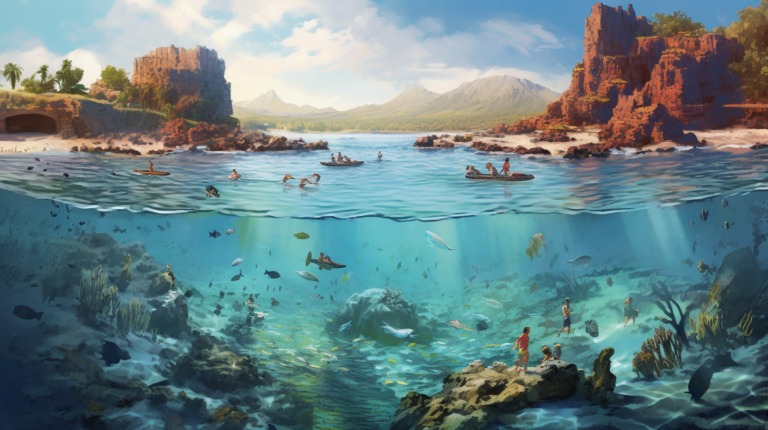“Lanai: From Pineapple Plantation to Luxury Oasis 🌴”
Are you ready to embark on a journey through time and witness the transformation of an island from a humble pineapple plantation to a luxurious tourist destination? Step onto the island of Lanai and delve into its rich history.
Located in Hawaii, Lanai’s story is a tale of resilience, adaptation, and evolution. As you explore the island’s past, you will discover how the pineapple industry shaped life on Lanai and how it eventually declined, paving the way for a new era of tourism.
You will also learn about the island’s unique character, from its scenic beauty to its cultural heritage. Join us as we uncover the history of Lanai, a place where tradition meets modernity, and where the past intertwines with the present.
Key Takeaways
- Lanai has a rich history of resilience, adaptation, and evolution, from its pre-contact indigenous culture to its transformation into a hub of agricultural production during the pineapple era, to its current status as a luxury tourist destination.
- The decline of the pineapple industry due to automation forced Lanai to diversify its economy and focus on tourism and real estate development.
- Life on Lanai during the pineapple era was marked by difficult working conditions, but workers formed a strong sense of community and camaraderie.
- Lanai has implemented sustainability initiatives to reduce waste, promote renewable energy, and protect the island’s wildlife and marine life, and can serve as a model for other destinations looking to balance growth and conservation.
Early History of Lanai
In the early days, Lanai was home to a small population of indigenous Hawaiians who lived off the land and sea. They had a deep connection with the island’s natural resources and were skilled at cultivating taro, sweet potatoes, and other crops. They also fished and hunted, using the island’s rich marine and terrestrial ecosystems to sustain their way of life.
Lanai’s pre-contact history is marked by a rich cultural heritage that is still evident today. The island’s indigenous people developed a unique way of life that was in harmony with the natural environment. They had a deep respect for the land and sea and believed that everything in the world was interconnected. This cultural perspective is reflected in their art, music, and storytelling traditions, which continue to be passed down through the generations.
As time passed, Lanai’s indigenous population was gradually displaced by European and American settlers who arrived in search of new opportunities. These newcomers brought with them new technologies and ways of life that fundamentally changed the island’s social and economic landscape.
One of the most significant changes came with the rise of the pineapple industry, which transformed Lanai into a hub of agricultural production and helped to shape the island’s modern history.
Rise of the Pineapple Industry
Now let’s talk about the Rise of the Pineapple Industry on Lanai. You’ll learn about the formation of the Hawaiian Pineapple Company and how it played a major role in transforming the island’s economy.
As you dive deeper, you’ll discover how the expansion of pineapple plantations led to a boom in employment opportunities and a surge in production, making Lanai one of the leading pineapple producers in the world.
Formation of the Hawaiian Pineapple Company
As the sweet and tangy scent of pineapple filled the air, the Hawaiian Pineapple Company was born, bringing prosperity to the island of Lanai.
The formation process of the company was a result of the business strategies of James Dole, who saw the potential in Hawaii’s fertile soil and ideal climate for pineapple cultivation.
In 1901, Dole purchased the island of Lanai and began converting it into a massive pineapple plantation.
With the success of his venture, Dole merged his company with two other pineapple growers to form the Hawaiian Pineapple Company in 1906.
Under the leadership of Dole, the Hawaiian Pineapple Company implemented several innovative business strategies that revolutionized the pineapple industry.
Firstly, he introduced mechanization to the farming process, which allowed for higher productivity and cost-efficiency.
Secondly, he utilized vertical integration by owning every aspect of the production process, from farming to canning and distribution.
Lastly, Dole marketed his pineapples as a luxury item to a niche market, creating a demand for his brand and increasing profits.
With these strategies in place, the Hawaiian Pineapple Company became the dominant force in the pineapple industry, and Lanai became known as the ‘Pineapple Island.’
Now, let’s take a closer look at how this success led to the expansion of pineapple plantations on the island.
Expansion of Pineapple Plantations
You can imagine the vast fields of pineapple stretching out before you, as the success of the Hawaiian Pineapple Company led to the expansion of the island’s pineapple production. With the company’s adoption of new pineapple plantation techniques, such as terracing and irrigation, the yields of the crop increased significantly.
This expansion of pineapple plantations on the island not only brought economic prosperity to Lanai, but also had a significant impact on the local ecology. The pineapple plantations required large amounts of water, which led to the construction of reservoirs and dams to divert water from streams. This disrupted the natural flow of water and affected the habitats of native species. Additionally, the extensive use of pesticides and fertilizers caused soil erosion and pollution. These practices eventually led to a decline in the quality of the soil, making pineapple cultivation less profitable.
As the industry declined, Lanai began to shift towards a new era, one of luxury resorts and tourism. Life on Lanai during the pineapple era was marked by the success of the Hawaiian Pineapple Company and the rapid expansion of pineapple plantations. However, this success came at a cost, with the island’s ecology being negatively impacted by the intensive farming practices. Despite this, the pineapple industry brought economic prosperity and shaped the island’s history in significant ways.
Life on Lanai During the Pineapple Era
As you delve into the history of Lanai during the pineapple era, you’ll discover the harsh working conditions that laborers had to endure. The pineapple industry brought in a large number of immigrant workers, who were often subjected to low wages and dangerous working conditions.
Despite these challenges, the tight-knit community on Lanai banded together to support one another during these trying times.
Working Conditions
The strenuous labor and long hours endured by workers in Lanai’s pineapple plantations were often overlooked in the pursuit of profit. Working conditions were harsh, with workers enduring scorching heat, intense physical labor, and exposure to harmful pesticides. Labor rights were not a priority for plantation owners, and workers were often underpaid and overworked.
Despite the difficult conditions, workers formed a strong sense of community and camaraderie. They relied on each other for support and formed close bonds that extended beyond the plantation.
Community life revolved around the plantation, with workers attending social events organized by their employers. However, these events often served as a way for plantation owners to exert control over their workers, rather than fostering a sense of community.
Community Life
Imagine strolling through the streets of Lanai City in the 1940s and hearing the lively sound of Portuguese folk music emanating from the plantation workers’ homes, like the sweet aroma of pineapple wafting through the air. The community life on Lanai during the heyday of the pineapple industry was vibrant and filled with local traditions. From lively festivals celebrating Portuguese, Chinese, and Filipino cultures to community events like rodeos and parades, there was always something to do and celebrate on this small island.
One of the most beloved community events was the annual Pineapple Festival, where the island would come together to celebrate the fruit that brought them all together. The festival would include a parade, carnival games, and a pineapple recipe contest. The entire island would participate, from the plantation workers to the wealthy pineapple executives. It was an event that brought the community together in a celebration of their shared heritage and love of the land. But as the pineapple industry began to decline, so too did the community life on Lanai.
The decline of the pineapple industry would have a profound impact on the island, and the community that had once thrived began to wither away. But even in the face of economic hardship, the people of Lanai remained resilient and continued to hold onto their local traditions. As the island began to shift towards tourism, new community events and traditions would emerge, but the spirit of the old Lanai would always remain.
The Decline of the Pineapple Industry
You may not realize it, but the decline of the pineapple industry on Lanai had a profound impact on the island’s economy and way of life. Automation was a significant factor in the industry’s decline. As technology improved, machines replaced workers, making the process of harvesting and processing pineapples much faster and more efficient. Unfortunately, this also meant that many workers lost their jobs, and the island’s economy suffered greatly.
In response to the decline of the pineapple industry, Lanai had to diversify its economy. The island began to focus on tourism and real estate development, which eventually led to its transformation into a luxury tourist destination. However, this transition was not without its challenges. Many residents were skeptical about the new developments and worried about the impact on the island’s culture and way of life.
Despite these concerns, Lanai has managed to maintain its unique character and charm while still attracting visitors from around the world. Today, Lanai is known for its stunning natural beauty, luxurious resorts, and world-class golf courses. The island’s transformation from a pineapple plantation to a luxury tourist destination is a testament to the resilience and adaptability of its people.
As you explore Lanai, you will see evidence of its rich history and culture, as well as the modern amenities that make it a top destination for travelers. In the next section, we’ll take a closer look at how Lanai has become one of the most sought-after vacation spots in the world.
Lanai’s Transformation into a Luxury Tourist Destination
If you’re looking for a unique vacation spot, consider visiting Lanai, where you’ll find stunning natural beauty, world-class golf courses, and top-notch amenities that cater to all your needs.
Lanai’s transformation into a luxury tourist destination has brought many changes to the island, including the development of high-end resorts with luxury amenities such as spas, restaurants, and pools. The Four Seasons Resort Lanai, for example, offers guests access to a championship golf course, a full-service spa, and a private beach club.
Despite concerns about the island’s transition, the development of these luxury resorts has had a positive economic impact on the island. Not only have they created new job opportunities for locals, but they have also brought in new revenue streams that have helped to sustain the island’s economy. In addition, the luxury resorts have attracted tourists who are willing to spend more money on activities and experiences, which has helped to boost the local economy even further.
Lanai’s unique character, however, goes beyond the luxury resorts and amenities. The island has managed to maintain its authentic charm and culture, which is evident in the small town of Lanai City, where visitors can explore the historic Dole Administration Building and the Lanai Culture and Heritage Center.
And of course, the island’s natural beauty remains a major draw for visitors, with attractions such as the Munro Trail and the Hulopoe Bay Marine Reserve offering stunning views and opportunities for outdoor adventure.
Lanai’s Unique Character
Exploring Lanai reveals a hidden gem of natural beauty and cultural authenticity, where visitors can immerse themselves in the island’s charm and experience its unique character.
As you walk around the island, you’ll notice its small size, which lends itself to a slow pace of life and a sense of community. The island’s culture is deeply rooted in its history as a pineapple plantation, and it’s evident in the architecture of the old plantation homes and buildings that have been preserved.
Lanai’s natural beauty is unparalleled, with stunning beaches, rugged cliffs, and lush, tropical landscapes. You can take a hike through the Munro Trail, which winds through a forest of Cook Island pines and offers breathtaking views of the island and neighboring islands. Or, you can explore the island’s beaches, like Hulopoe Bay, which boasts crystal-clear waters and a protected marine reserve, home to spinner dolphins and humpback whales.
As you immerse yourself in Lanai’s unique character, you’ll discover that the island’s charm lies in its ability to transport you back in time while offering modern amenities. The island’s luxury resorts blend seamlessly with the natural surroundings, providing a comfortable retreat that doesn’t detract from the island’s culture and beauty.
You’ll leave feeling refreshed and rejuvenated, but also with a deeper understanding and appreciation for Lanai’s history and culture.
As Lanai continues to evolve, it’ll be interesting to see how the island’s unique character is preserved while still accommodating the needs of modern-day tourists.
Future of Lanai
Looking ahead, it will be fascinating to witness how the island of Lanai continues to evolve and adapt to changing times, while still preserving its distinct cultural identity. One of the most significant changes the island is currently facing is in its tourism industry growth. As one of the smallest inhabited Hawaiian islands, Lanai has always been a more secluded and exclusive destination. However, with the recent development of luxury resorts, the island is quickly becoming a hot spot for travelers seeking a unique and luxurious vacation experience.
As the tourism industry on Lanai continues to grow, it is important to consider the impact it has on the island’s sustainability and environment. The island’s unique character and cultural identity are closely tied to its natural beauty and resources. To preserve these treasures, Lanai has implemented sustainability initiatives to reduce waste, promote renewable energy, and protect the island’s wildlife and marine life. By balancing tourism growth with environmental conservation efforts, Lanai can continue to attract visitors while maintaining its authentic charm and beauty.
Looking to the future, it is clear that Lanai has a unique opportunity to set an example for sustainable tourism practices. By prioritizing environmental preservation and cultural sensitivity, the island can continue to attract visitors while maintaining its distinct identity. As travelers become increasingly aware of the impact their choices have on the environment, Lanai’s commitment to sustainability can serve as a model for other destinations looking to balance growth and conservation. With careful planning and a dedication to preserving its natural beauty, Lanai can continue to thrive as a world-class destination for years to come.
Conclusion
Congratulations, you’ve reached the end of this enlightening journey through the history of Lanai. You’ve learned about the island’s humble beginnings, the rise and fall of the pineapple industry, and its transformation into a luxurious destination for tourists.
Lanai’s story is like that of a phoenix rising from the ashes. From its days as a pineapple plantation to its current form as a stunning resort, the island has undergone a remarkable transformation. Its unique character, rooted in the Hawaiian culture, shines through in every corner of the island.
As you reflect on the history of Lanai, let the metaphor of a butterfly emerging from its cocoon resonate with you. Just as the butterfly undergoes a metamorphosis to become a beautiful creature, so too has Lanai transformed into a magnificent destination. It’s a testament to the resilience and adaptability of the island and its people.
So, if you ever have the opportunity to visit Lanai, take a moment to appreciate the journey it has taken to become the paradise it is today.







